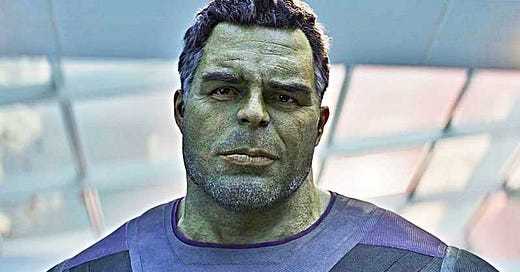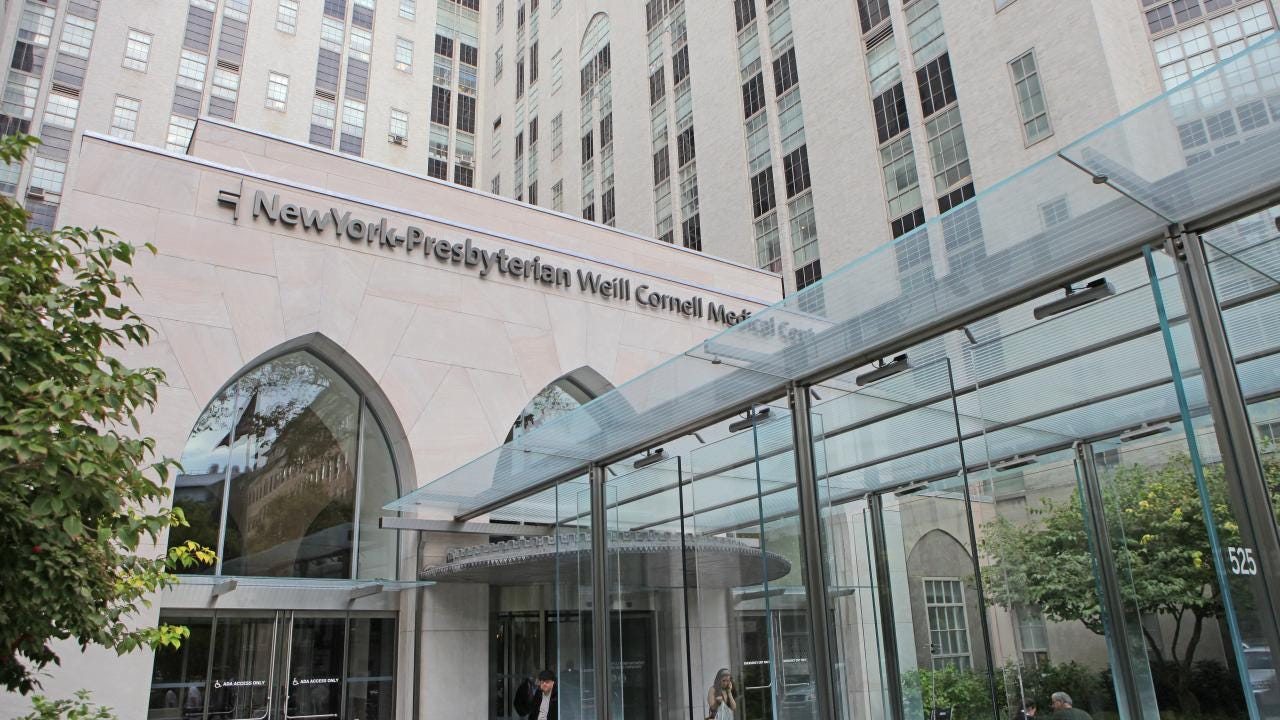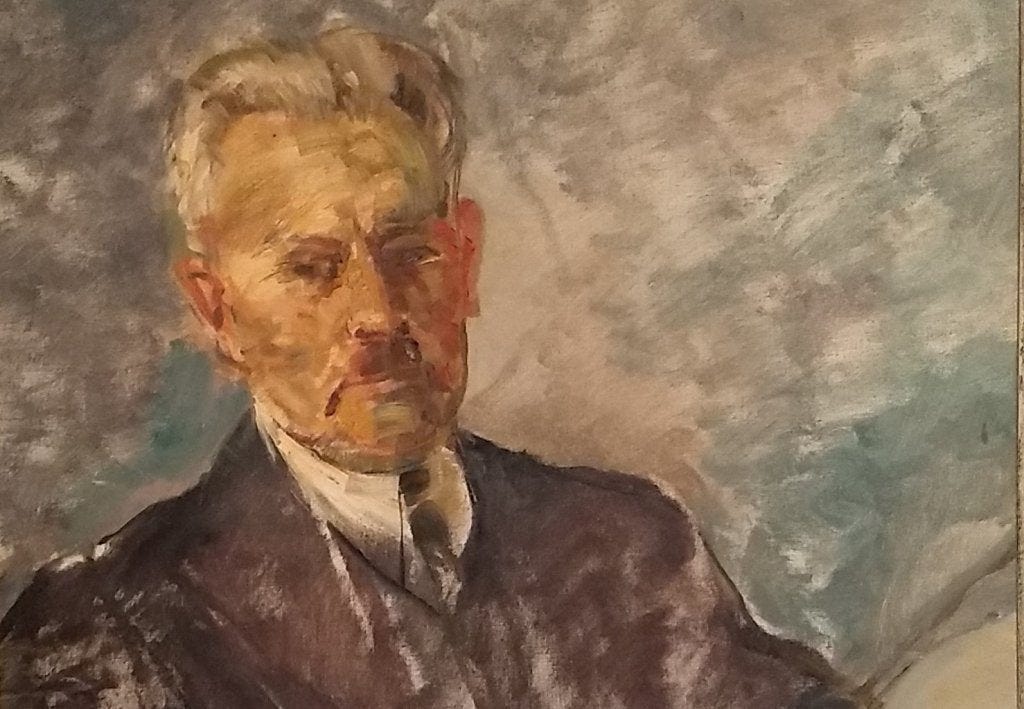Many years ago, I spent a summer as a student chaplain at Weill-Cornell Medical Center in Manhattan, offering pastoral visits and care to the patients under the supervision of the chaplain’s office. This was called Clinical Pastoral Education (CPE), a formal educational program for spiritual care which is the standard training for American clergy.
Being in CPE is like therapy on steroids. You are flung into profound moments of suffering as the local representative of the divine, and spend intense periods each week openly processing your emotions with you colleagues. Parts of it, especially the infamous “IPR” (interpersonal relations group), can feel like a gently-guided version of Jerry Springer.
But I got hooked. By the time I was at the hospital, it was already my second unit of training. My first summer, I had worked as a chaplain in day-clinics serving clients with schizophrenia or other mental illness. The experience was fulfilling and emotional, accompanying clients who were confronting ultimate questions of health, healing, mortality, and God. Deep in existential waters, I could not help but to face these questions myself.
Thank you for reading Beyond the Music! If you enjoy reading this newsletter, please consider supporting me with a paid subscription.
One of my main lessons from those summers was how to be present, especially with those whose experience or feelings are radically different from our own. If you haven’t checked the news lately, or history for that matter, it’s a truism that human beings don’t do “different” very well. Yet part of our pastoral education was learning to integrate difference, and thus to honor the authentic feelings and selfhood of our clients.
A key to this was the learning that we as human beings can actually access our primary feelings at any time: happiness, sadness, anger, and fear. Being present with our patients did not require us to share their same experiences of suffering. Indeed, sloppy assumptions could easily lead to judging, avoiding, or minimizing their feelings altogether. Or it may lead to that most callous of platitudes: “I know how you feel.” Instead, we had to go to our primary emotions — our own joys, fears, sadness, and anger — and use them to “join” the patient authentically.1
This sort of emotional crossfit training has been an essential part of my cantorial ministry ever since. It helps me to “tune in” with the feelings of those I am with, and not be afraid to have the emotional imagination to sit with those experiencing deep suffering.
The channeling and surfacing of emotions is among the oldest cantorial superpowers. So perhaps I should not be surprised that I found the essence of this power expressed by a Marvel superhero.
In this poignant interlude from The Avengers, Bruce Banner reveals that he can always turn into the big green monster, the Hulk, because of his secret — “I’m always angry.”
This is a life of pathos that I would wish on no one. But after my summers of pastoral care, I became more convinced that we as humans can always access our full range of emotions, even difficult ones, and thereby be more powerful agents of healing and change.
Participating in the feelings and suffering of others is at the heart of being a prayer leader, and in many ways, of being a musician.
Cantors in particular have felt that the sonic surfacing of communal feeling is at the very core of our art. Golden Age chazn Zawel Kwartin (1874-1952) wrote of this power and its influence on his personal decision to return to old, traditional synagogue repertoire over modern liturgical style:
“After a while I started to feel that the modern cantorial repertoire satisfied me less and less; I felt ever more drawn to conservation, orthodoxy and tradition. I started to search for compositions, recitatives and improvisations that stemmed from the great Orthodox cantors of the old traditional form. In Vienna, I was successful in finding the melodies of Yerucham Hakatan, Nissi Belzer, and [Wolf] Shestapol. I grew ever more absorbed in these unique compositions that were suffused with the perennially distinctive quality of Jewish life. But the more deeply I delved into these compositions, the more there grew in me the longing to be like them, the generations of cantors that piously and conveying fear of heaven sang out the tears and hidden longings of their people.”2
The power of chazonus to channel these hidden emotions partly explains its broad attraction to Jews in the twentieth century. Mourning the loss of the shtetl, the traumas of Jewish persecution, and the ever-open wound of the Shoah, the Jew always had much for which to cry out in sadness. In this way, our own post-10/7 age is no different.
On a deeper level, the drama of chazonus als offers both cantor and listener a rich sonic journey through the stages of grief. Eastern European cantorial style cannot brook the denial of emotion. It allows the chazan to not only to praise God but even to challenge Him. Thus in one recitative, the cantorial style can progress through anger, bargaining, sadness, and eventually acceptance — all in the presence of the Creator. This pastoral potential to musically process grief and trauma before divine witness is one of the timeless attractions of the cantorial soundscape.
One of my teachers, Cantor Jack Mendelson, has been open about the power of grief and trauma in his own pursuit of chazonus. A cantorial singer from his youth in Boro Park, Jack has had two movies and a stage play made about his full and colorful life in the American synagogue. As with all of Jack’s iconic storytelling, emotions and humor run high. His one-man show, The Cantor’s Couch, goes particularly deep into Jack’s own childhood issues, including his mother’s mental health, the intense pressure to succeed, and the creeping feeling of loss watching the cantorial world of his youth slowly pass from the earth.
Cantor Mendelson often speaks (and sings) about how Jews used to come to shul and cry during chazonus. This deep cathartic need may seem lost today, but it is a very old one for Jews. After all, where else could the one’s suffering be more fully witnessed before God than in the plaintive cries of prayer? Yet the chazonus superpower of eliciting tears is not only a modern phenomenon — it is over three hundred years old.
Rabbi Avi’ezer Selig Margoliot, a judge and preacher born in mid-seventeenth-century Poland, wrote of the emotional power of the cantors in his hometown of Kalisch, particularly in contrast with those cantors he experienced in German lands.3 He advised cantors not to sing merely to have their voices heard or to make money, since “the cantor that prays with intention and pleasing melody can awaken [the people] more than any preacher.”
Speaking of the great power of the cantor, R. Margoliot reported:
“For one time in our community [of Kalisch] our cantor prayed – may his name, R. Baruch, be mentioned for good. He was saying the hymn “Angels of Mercy [malachei rachamim]” with a great spiritual arousal [hit’orerut gadol], full of melodies of compassion, until he had softened the human heart with the words: “perhaps he shall have mercy upon a poor and needy people,” and men and women began to cry greatly. And one of the heads and leaders of the city said that when his father had died he was unable to shed tears; yet through the spiritual arousal of this cantor, he was [finally] able to cry when he said the thirteen attributes.
And especially on the days of awe he was one of those awakened when [the cantor] began with the word “magnified [yitgadal]” and raised his voice in melody, or when he said “remember us for life [zokhreinu l'chaim] or “he who sustains life [m’chalkeil chaim], there was not one person in the synagogue whose heart was not broken to return in repentance. And especially when he sang the avodah service, everyone would pour out their hearts like water, unlike what is done in other lands who have neither melody nor spiritual arousal. But the cantors in our land can arouse repentance with their voices.4
The power of chazonus here begins in tears, but ends in repentance. In channeling the mourning and suffering of the community and bringing them to their emotions, the cantor here simultaneously leads them into a feeling of agency to improve for the year ahead. This connection between music and repentance is the implication of the Hebrew term “hitor’erut” — spiritual awakening, and is referenced by a number of early eighteenth century cantorial ethicists, particularly regarding the music of the High Holidays.
Yet this superpower is even more marvelous when taken to its ultimate conclusion — that by saying prayers well and inspiring people towards grief and repentance, the cantor actually participates in the redemption of the entire world. This theology of cantorial power was wrapped up in the early modern concept of the cantor as in place of the high priest — a notion shared by many rabbis and cantors alike. The rejection of this vocation and the profanation of cantorial leadership was thus seen as a villainous subterfuge and a needless extension of the exile. R. Margoliot says it plainly: “For behold the cantor can himself bring the redemption by inspiring repentance, yet he separates himself from this, on account of our sins.”5
Or to quote Uncle Ben: “With great power comes great responsibility.”
To conclude this meditation on the power of chazonus to channel emotions and surface suppressed tears, I am going to take you back to my time as a chaplain and share something a little more personal. I wrote the following words for a health care website —it’s not my finest writing, and I think I would use my voice differently now to tell the story. But it does capture one special pastoral moment, and one which reminds me of the tearful and tender work of our vocation.
He Who Sings Prays Twice
by Matthew Klein6
Frank is dying. He is a strong, determined man of eighty-four, who until only five months ago was still commuting in from Westchester to work at his firm in downtown Manhattan. A pillar of his community, a husband of forty-five years, a man of devotion to both faith and family. He now faces one of the most aggressive cancers the hospital has ever seen. He receives palliative care, and his family has been visiting him regularly, anticipating his final hours.
Towards the end of my day, I receive a referral from one of my fellow chaplains. Frank, a patient on her floor, has heard that there is a cantor – a Jewish music minister and prayer leader – on-call as a hospital chaplain. He has specifically asked for me. And he may not have many hours left. Though I have spent several weeks on the floors already, this will be one of my first close encounters with the dying. I walk up to the room, shaking my hands out a bit and taking a deep breath, trying to face my own questions. How will I speak to a man facing death? What shall I say?
As I enter Frank’s room, the lights are low, the late afternoon sun casting a muted glow through the shades. Frank is lying in bed, a brown blanket covering him, with only the hospital gown revealing the fragility of his frame. Frank’s eyes widen when he sees me, and he struggles to turn towards me, a slight desperation in his demeanor. He is very direct.
“I’m glad you came….I would like to hear, it would please me to hear the Hineni.”
Hineni is the cantor’s prayer, said before the heart of the Jewish High Holiday liturgy. It professes the cantor’s unworthiness of the task of praying on behalf of his community—of representing them before God—and asks mercy both for himself and his people. It is one of the defining prayers of my ministry.
“...because as I prepare, and see that the doctors don’t know and that I may be approaching…I want you on behalf of me to say this prayer…..And then if there are other prayers that you think are appropriate, we can offer them too, as we move forward. Do you think you could do that?”
My heart is full. I smile, with compassion and tears yearning to overtake me. I am about to be of service to a dying man with the deepest prayer of my vocation. I tell Frank that I would be happy to pray this for him. “Forgive me for not standing up as you pass my seat,” he jokes.
I chuckle. And I breathe. And I begin.
Hineni, he’ani mima’as, nir’ash v’nifchad, mipachad yosheiv tehilot yisrael…
Here I am, poor in merit, trembling in the presence of the One who hears the prayers of Israel...
How true, for the both of us! As I sing, I think of what Frank must be feeling. Perhaps Frank is reaching out to God, in these last moments. Perhaps it is the music of the prayer that connects him back to his community and childhood. Perhaps he feels insufficient, as the cantor professes to be, as he stands on the threshold, waiting to meet the Holy One. I channel all of these kavvanot—these intentions—into the music of my prayers, hoping that they will find favor with both God and Frank in his final hours.
I reach the end of the chant. Frank’s eyes are wide. He takes my hand and holds it tight. He conveys his gratitude. His eyes begin to water. He mentions that his son’s wife is about to give birth to twins. He had always wanted to see them be born. Now, it seems, he may not.
Prayer brings our deepest concerns to the forefront of our conscience. But it is music that takes us one step further, opening our emotions in ways we may not have thought possible. Thinking on Frank’s sadness at not seeing his grandchildren, I draw upon another Jewish song, “HaMalach HaGoel Oti,” which contains a biblical blessing for children. We sing, offering blessings to these two precious lives that he may never know. Frank is moved to ask for a blessing for his wife as well, and I chant one.
Our songs and prayers come to a close, and I sense our meeting’s end. I am sad to part with Frank, to think that I may not see him. I wonder if he will see anyone else.
Frank asks if I will be there later in the week. I assure him that I’m on call, and that I am here for him. We part, with gratitude and sadness.
Frank died several hours later. To have provided him prayer, and music, in his last hours is one of the defining moments of my vocation as cantor. I went into the room not knowing what to say. But in the end, it was more a question of what to sing.
Each High Holidays, my heart is full anew when I sing Hineni prayer. From the majesty of the synagogue, I am often transported to that small hospital room, where I was in the right place at the right time to fulfill a dying man’s wish. I wonder who else will be touched by this chant. And I will always remember the power of music — to speak to our hearts and souls in our most trying and precious hours.

This process was part of a larger framework called systems-centered therapy which our supervisor used for group work.
Zevulun Kwartin, Mayn leben (Philadelphia: Aroysgegeben fun a gezelshaflikhen komitet, 1952), 148. My thanks to Dr. Jeremiah Lockwood for the quote and his translation.
R. Margoliot dwelled in Western Europe for twenty years, first in Metz (c.1695-1700) and then in Halberstadt (c. 1703-1714), where he studied in the klaus (Jewish learning house) of Behrmann Lehmann.
R. Selig Margoliot, Hibburei Likkutim (Venice: Bragadin, 1715): 4v-5r.
ibid. 5r.
My “maiden” name.







So beautiful, Matt. I use music in my hospice caring. 🎶=💕
Beautiful, Matt. Once, after praying with an elderly hospital patient (requested by them) and reporting it to my non-Jewish CPE supervisor, the latter confronted me: why did I think singing was something that a chaplain does, as if a prayer must only be spoken? "Stay in your lane" was the spiritual care department's motto. Singers sing. Chaplains... pray-talk? I offered a brief but similar response to that one you did here. So much grief, and so much is possible to untangle with our ancient vocal prayers.